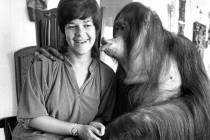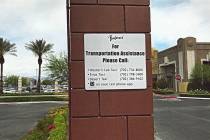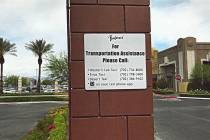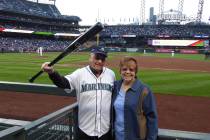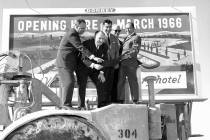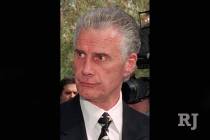FBI Citizens’ Academy teaches that regular Joes, Janes do count
As a journalist since the ’70s, much of my early experience with FBI agents, with a few notable exceptions, has involved two terse words: "No comment."
So spending eight evenings with forthcoming, funny and informative FBI agents who answer many — but not all — of my questions is a sign times have changed. The tight-lipped agents of yesteryear were replaced by chatty men and women, who relish telling war stories about old cases to the dozen people attending the FBI Citizens’ Academy in Las Vegas.
Special Agent Richard Beasley asked us the trick question: Does anybody here remember how G-sting got started?
No, because the origin of the corruption probe that nabbed four Clark County Commissioners and a topless club owner was never revealed. Nor was Beasley telling.
Today, five weeks into the FBI Citizens’ Academy, I count myself lucky to have nabbed an invitation, the only journalist in a group of much finer people — educators, religious leaders and business people. (And not just a bunch of white guys.)
Since April 6, we have faithfully spent about three hours every Tuesday evening learning about today’s FBI, which is a lot different from the ’70s.
Next Tuesday, we go to the firing range. Remember that famous photo of Patty Hearst wearing a beret and holding an M-1 carbine? Now think of me in that pose with that gun. Now erase that image, please.
The FBI Citizens’ Academy in Las Vegas started seven years ago, and today all 56 field offices offer this behind-the-scenes look at today’s FBI. This isn’t your granddaddy’s FBI, chasing bank robbers. However, the classes are held in the FBI’s John Lawrence Bailey Memorial Building, always a sad reminder of the likable agent who was killed in 1990 trying to stop a bank robbery while he was serving a subpoena.
As Las Vegas Special Agent in Charge Kevin Favreau explained our first evening, on Sept. 11, 2001, the FBI changed from a reactive law enforcement body, which investigated and solved crimes, to a proactive, preventive bureau in which the top goal is to prevent terrorism. The world changed that day, and the FBI changed with it.
By the way, while clearly this is pro-FBI, the agents speaking to the academy voluntarily bring up the bureau’s warts — including the biggest wart of all, Robert Hanssen, the FBI supervisor who spied for Russia between 1985 until his arrest in 2001. There are frequent references to how policies have changed as a result of Hanssen.
If you are interested, the next academy will be offered next spring, and by then, there will be information about how community leaders can apply on the local FBI’s website at http://lasvegas.fbi.gov/. Felons need not apply, and you have to agree to a background check and be at least 21.
Our academy has covered terrorism, counterintelligence, white-collar crime, violent crimes, public corruption, civil rights, organized crime, undercover operations, cyber crime, child pornography and child molestation.
In every single presentation, I’ve learned something new.
Special Agent John Burbridge from the terrorism squad explained that the most dangerous terrorist is "the lone wolf" extremist. When authorities arrested Faisal Shahzad on Monday, he seemed like the classic lone wolf terrorist. He’s telling authorities he acted on his own when he left his SUV rigged with a homemade bomb in Times Square.
Let’s heap praise on two street vendors, Lance Orton and Duane Jackson, who noticed the smoking car making popping noises and alerted police.
No matter how proactive the FBI becomes, no matter how many terrorist plots they foil, some evil acts will be thwarted by a regular Joe or Jane who notices something isn’t right … and instead of ignoring it, acts on it.
Jane Ann Morrison’s column appears Monday, Thursday and Saturday. E-mail her at Jane@reviewjournal.com or call (702) 383-0275. She also blogs at lvrj.com/blogs/morrison.



